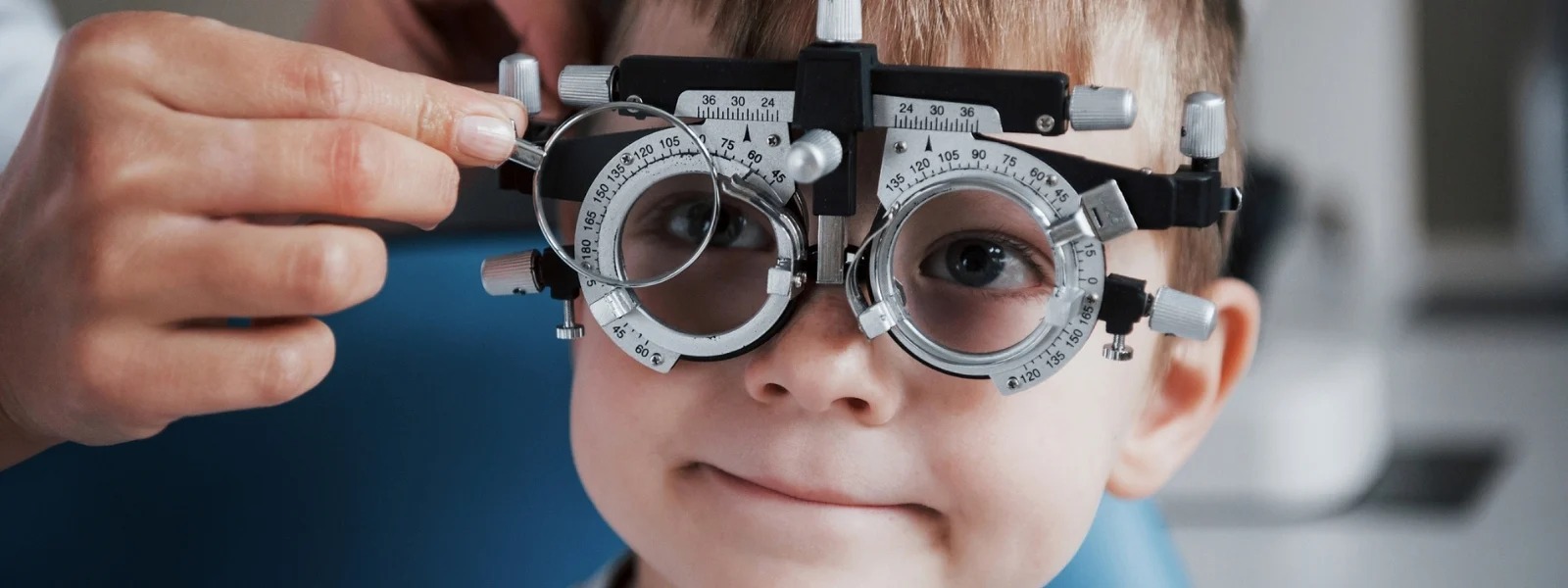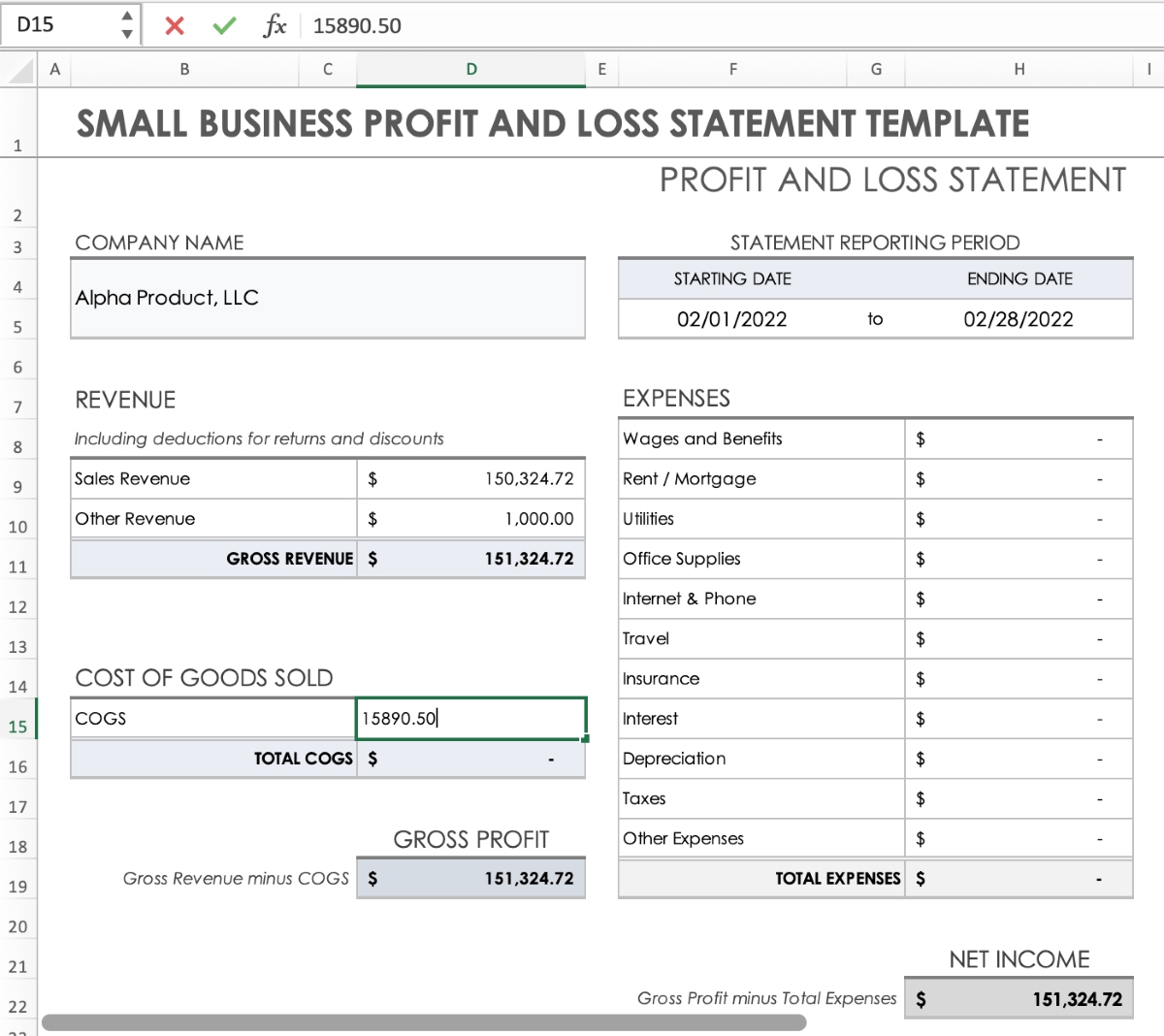

Finance
How Does Eye Insurance Work?
Published: November 20, 2023
Learn how eye insurance works and how it can benefit your finances. Protect your vision and save money with proper coverage.
(Many of the links in this article redirect to a specific reviewed product. Your purchase of these products through affiliate links helps to generate commission for LiveWell, at no extra cost. Learn more)
Table of Contents
Introduction
Welcome to the world of eye insurance, where protecting your vision and ensuring access to quality eye care becomes more affordable and accessible. In today’s modern society, eye health is of utmost importance, as our eyes play a vital role in experiencing and navigating the world around us. However, eye-related expenses, such as regular eye exams, prescription glasses, and contact lenses, can quickly add up.
That’s where eye insurance comes in. Eye insurance, also known as vision insurance or vision benefits, is a type of insurance that covers various eye care services and products. Whether you’re looking to safeguard your overall eye health, correct refractive errors, or simply enhance your visual experience, eye insurance can provide the financial security you need, allowing you to prioritize your eye care without breaking the bank.
Eye insurance is designed to help mitigate the costs associated with routine eye exams, eyeglasses, contact lenses, and even certain eye surgeries. It provides coverage for a wide range of eye care needs, ensuring that individuals and families can maintain optimal eye health and visual acuity.
Having eye insurance offers numerous benefits beyond just cost savings. It encourages regular eye exams, which are essential for detecting and managing eye conditions and diseases. Early detection allows for timely intervention and can potentially prevent more serious complications down the line. Additionally, eye insurance provides access to a network of eye care professionals, ensuring that individuals receive expert care from trusted providers.
Whether you have perfect vision, wear glasses or contact lenses, or are considering specialized eye procedures like LASIK, eye insurance can provide valuable coverage and peace of mind. In the following sections, we will delve deeper into the benefits of eye insurance, the different types of coverage available, and how to maximize your eye insurance benefits.
Benefits of Eye Insurance
Eye insurance offers a wide range of benefits to individuals and families, ensuring that eye care remains affordable and accessible. Here are some key advantages of having eye insurance:
- Cost Savings: One of the primary benefits of eye insurance is the potential for significant cost savings. Eye care expenses can add up quickly, especially if you require regular eye exams, prescription glasses, or contact lenses. With eye insurance, you can receive coverage for these services, reducing the financial burden on your budget.
- Regular Eye Exams: Eye insurance encourages regular eye exams, which are vital for maintaining optimal eye health. These exams not only evaluate your vision but also screen for conditions like glaucoma, cataracts, and macular degeneration. Early detection is key in managing and treating these conditions effectively.
- Access to Quality Eye Care Providers: Eye insurance often comes with a network of eye care professionals. This ensures that you have access to a wide range of skilled optometrists and ophthalmologists who can provide comprehensive and specialized care. Having a network of providers makes it easier to schedule appointments and receive the necessary care promptly.
- Prescription Eyewear Coverage: Eye insurance typically includes coverage for prescription eyewear, such as glasses or contact lenses. This helps offset the costs associated with updating your prescription, purchasing new frames, or replacing lost or damaged glasses. Having coverage for prescription eyewear allows you to maintain clear vision without worrying about the financial impact.
- Discounts on Additional Services: Many eye insurance plans offer discounts on additional services or products not covered by the basic plan. These may include items like prescription sunglasses, specialized lenses, or even elective procedures like LASIK. Taking advantage of these discounts can provide further cost savings for individuals seeking specific eye care solutions.
By having eye insurance, you can prioritize your eye health and receive essential eye care services without straining your finances. It offers peace of mind, knowing that you have coverage for routine exams, necessary treatments, and prescription eyewear. In the next section, we will explore the different types of eye insurance available to cater to your specific needs.
Types of Eye Insurance
When it comes to eye insurance, there are various types of coverage available to cater to different needs and preferences. Here are the most common types of eye insurance:
- Employer-Sponsored Vision Insurance: Many employers offer vision insurance as part of their employee benefits package. This type of insurance typically covers routine eye exams, prescription eyewear, and sometimes even discounts on additional services. It is often more affordable and convenient as premiums are deducted from your paycheck.
- Stand-Alone Vision Insurance: Stand-alone vision insurance is purchased independently from a healthcare provider or insurance company. It is suitable for individuals or families who do not have access to employer-sponsored vision insurance but still want comprehensive eye care coverage. Stand-alone plans generally cover routine eye exams, prescription eyewear, and discounts on additional services.
- Medical Insurance with Vision Coverage: Some medical insurance plans include vision coverage as part of their benefits package. These plans provide coverage for both medical eye conditions and routine eye care services. It’s important to review the specific details of your medical insurance plan to understand what eye care services are covered and any associated costs.
- Discount Vision Plans: Discount vision plans are not insurance plans but rather memberships that offer reduced rates on eye care services. These plans typically provide discounts on eye exams, prescription eyewear, and other vision-related products. While they don’t provide comprehensive coverage, they can be cost-effective for individuals who require infrequent eye care services.
Each type of eye insurance has its own set of benefits and limitations. It’s crucial to carefully review the coverage options, premiums, and network of providers before selecting the right eye insurance plan for your needs. Understanding the types of eye insurance available allows you to make informed decisions and find a plan that aligns with your budget and eye care requirements.
Next, we will delve into the coverage and costs associated with eye insurance, helping you understand what services and products are typically included and what out-of-pocket expenses to expect.
Coverage and Costs
Eye insurance provides coverage for a range of eye care services and products, but the specific coverage details can vary depending on the insurance plan you choose. Here is an overview of the common services and products that eye insurance typically covers:
- Routine Eye Exams: Most eye insurance plans include coverage for routine eye exams, allowing you to have regular check-ups to assess your vision and screen for eye conditions.
- Prescription Eyewear: Eye insurance often covers a portion of the costs associated with prescription eyewear, including eyeglasses and contact lenses. This can include the cost of frames, lenses, lens coatings, and in some cases, contact lens fitting and evaluation.
- Specialized Eyewear: Some eye insurance plans may also offer coverage for specialized eyewear, such as prescription sunglasses or safety glasses.
- Eye Surgeries and Treatments: Certain eye insurance plans may provide coverage for medically necessary eye surgeries and treatments, such as cataract surgery or treatment for conditions like glaucoma or macular degeneration.
- Discounts on Additional Services: Eye insurance plans often offer discounts on additional services not covered by the basic plan. These can include elective procedures like LASIK or discounts on non-prescription sunglasses and accessories.
It’s important to note that eye insurance plans may have limitations and restrictions on coverage. For example, they may have a specific allowance for the cost of eyewear, meaning you may be responsible for any amount exceeding the coverage limit. Additionally, some plans may have waiting periods before certain services are covered, so it’s important to review the details of your plan.
As for the costs associated with eye insurance, they can vary depending on factors such as the insurance provider, type of plan, coverage levels, and any additional services or add-ons you choose. Typically, eye insurance plans require a monthly or annual premium payment. Additionally, there may be out-of-pocket costs, such as deductibles or co-payments, for certain services or products.
Understanding the coverage and costs of your eye insurance plan is essential for managing your eye care expenses. It allows you to plan your budget accordingly and make informed decisions about your eye care needs and potential out-of-pocket costs. Next, we will explore how to find the right eye insurance provider to meet your specific requirements.
Finding an Eye Insurance Provider
When seeking eye insurance, it’s important to choose a reputable and reliable provider that offers the right coverage for your needs. Here are some steps to help you find the right eye insurance provider:
- Evaluate Your Needs: Begin by assessing your eye care needs and determining what type of coverage you require. Consider factors such as whether you need coverage for routine exams, prescription eyewear, or specialized treatments. Understanding your specific needs will help you narrow down the available options.
- Research Different Providers: Conduct thorough research to identify reputable eye insurance providers. Look for providers with a strong track record in the industry and positive customer reviews. Consider factors such as the network of eye care professionals they work with and the range of services and products covered under their plans.
- Compare Plans: Once you have identified a few potential eye insurance providers, compare the plans they offer. Consider the coverage levels, costs, and any limitations or restrictions associated with each plan. Pay attention to details such as premium costs, co-pays, deductibles, and any waiting periods.
- Check Provider Networks: If you already have preferred eye care providers, check if they are within the network of the insurance providers you are considering. Working with an in-network provider can help ensure seamless coordination of care and potentially reduce your out-of-pocket expenses.
- Seek Recommendations: Talk to friends, family, and medical professionals to get recommendations on eye insurance providers. They may have personal experiences and insights that can help you make an informed decision.
- Contact Providers: Reach out to the eye insurance providers you are considering and ask any questions you may have. Inquire about their coverage details, customer service, claim processes, and any additional services or discounts they offer. A reliable provider will be transparent and responsive to your inquiries.
- Review and Select: After gathering all the necessary information, carefully review the plans and provider options. Select the eye insurance provider that best aligns with your needs, offers the coverage you require, and fits within your budget.
Finding the right eye insurance provider may take some time and research, but investing in the search process is important to ensure you have a comprehensive and trustworthy coverage for your eye care needs. In the next section, we will explore the claims process for eye insurance and how you can navigate it effectively.
Understanding the Claims Process
Once you have eye insurance coverage, it’s important to understand the claims process to ensure a smooth and successful reimbursement for your eye care expenses. Here are the key steps to understanding the claims process:
- Keep Documentation: When you receive eye care services or purchase eyewear, be sure to keep all necessary documentation, including itemized receipts, invoices, and any other relevant paperwork. These documents are essential for initiating and supporting your claims.
- Submit Claims: Once you have the required documentation, submit your claims to the insurance provider. This can typically be done online, through a mobile app, or by mail. Follow the instructions provided by your insurance company to ensure proper submission.
- Verify Coverage: Before submitting a claim, review your insurance plan to ensure the service or product you are claiming for is covered. It’s also important to double-check any coverage limitations, waiting periods, or specific requirements for reimbursement.
- Review Reimbursement Policies: Familiarize yourself with your insurance provider’s reimbursement policies. Some providers may have a set schedule for reimbursements, while others may require additional information or documentation before processing your claim.
- Be Mindful of Timelines: Keep track of any deadlines for submitting claims. Submitting claims within the specified time window is important to ensure prompt reimbursement. Late submissions may result in denial of the claim.
- Follow Up: If you haven’t received reimbursement or any communication from your insurance provider within a reasonable time frame, don’t hesitate to follow up. Contact their customer service department to inquire about the status of your claim and any additional information they may require.
- Appeal if Necessary: In the event that a claim is denied, it’s important to understand the appeal process. Review the reasons for the denial and provide any additional information or documentation to support your claim. Follow the instructions provided by your insurance provider for appealing the decision.
Understanding the claims process and following these steps can help ensure a smooth and efficient reimbursement experience. It’s important to maintain clear communication with your insurance provider and provide accurate and complete documentation to support your claims. By doing so, you can maximize the benefits of your eye insurance coverage and effectively manage your eye care expenses.
Next, we will explore some tips for maximizing your eye insurance benefits and getting the most out of your coverage.
Tips for Maximizing Eye Insurance Benefits
Maximizing your eye insurance benefits not only helps you make the most of your coverage but also ensures that you receive the best possible eye care. Here are some tips to help you maximize your eye insurance benefits:
- Schedule Regular Eye Exams: Take advantage of your eye insurance coverage by scheduling regular eye exams. These exams not only help maintain your eye health but also allow for early detection of any potential issues.
- Understand Your Coverage: Familiarize yourself with the details of your eye insurance coverage. Review the benefits booklet or contact your insurance provider to understand what services and products are covered, any limitations, and any additional perks or discounts available.
- Stay In-Network: When seeking eye care services, choose providers that are within the network of your insurance plan. In-network providers have negotiated rates with the insurance company, ensuring that you receive the maximum benefit and potentially minimizing any out-of-pocket expenses.
- Research Providers: Before selecting an eye care provider, do some research to ensure they have a good reputation and offer quality care. Look for providers who have experience, positive patient reviews, and a wide range of services to meet your specific needs.
- Consider Coatings and Upgrades: When getting prescription lenses, consider adding coatings such as anti-glare or scratch-resistant coatings. These upgrades may be covered partially or fully by your eye insurance and can enhance the durability and clarity of your lenses.
- Take Advantage of Discounts: Explore any additional discounts or perks offered by your eye insurance provider. This may include discounts on non-prescription sunglasses, contact lens supplies, or even elective procedures such as LASIK. Taking advantage of these discounts can provide further savings.
- Submit Claims Promptly: Ensure you submit your claims as soon as possible after receiving eye care services or purchasing eyewear. By submitting claims promptly, you can minimize the chances of missing any claim submission deadlines and ensure timely reimbursement.
- Utilize Flexible Spending Accounts (FSAs) or Health Savings Accounts (HSAs): If you have access to an FSA or HSA, consider using these accounts to maximize your eye insurance benefits. These accounts allow you to set aside pre-tax dollars for eligible medical expenses, including eye exams, eyeglasses, and contact lenses.
- Keep Your Coverage Up to Date: Regularly review your eye insurance coverage to ensure it meets your evolving needs. Life changes, such as marriage or the addition of dependents, may require adjustments to your coverage. Reassess your insurance plan annually to ensure it aligns with your current eye care requirements.
By implementing these tips, you can make the most of your eye insurance benefits and ensure that you receive optimal eye care while minimizing your out-of-pocket expenses. Remember to always review and understand your insurance coverage and contact your provider for any specific questions or clarifications.
In the next section, we will address some common questions related to eye insurance to provide further clarity on this topic.
Common Questions about Eye Insurance
Eye insurance can sometimes be complex, and it’s natural to have questions about how it works and what it covers. Here are answers to some common questions about eye insurance:
- What does eye insurance typically cover? Eye insurance usually covers routine eye exams, prescription eyewear (eyeglasses and contact lenses), and discounts on additional services. Coverage for eye surgeries and specialized treatments may vary depending on the insurance plan.
- What if I need eye surgery? Some eye insurance plans provide coverage for medically necessary eye surgeries after meeting certain criteria. It’s important to review your specific plan’s coverage for eye surgeries and consult with your insurance provider for more information.
- Do I have to choose from a specific network of eye care providers? Many eye insurance plans have a network of preferred eye care providers. While you’re not obligated to choose a provider from the network, going out-of-network may result in higher out-of-pocket costs. It’s recommended to check the list of network providers associated with your insurance plan.
- Are pre-existing eye conditions covered? Eye insurance plans typically cover pre-existing eye conditions. However, they may have waiting periods before certain services related to pre-existing conditions are covered. Review your specific plan to understand the waiting period and coverage details for pre-existing conditions.
- Can eye insurance be used for cosmetic procedures? Eye insurance typically does not cover cosmetic procedures, such as eyelid lifts or cosmetic contact lenses. However, some plans may offer discounts on elective procedures like LASIK. Check with your insurance provider to understand the coverage for cosmetic procedures.
- Is vision therapy covered by eye insurance? Vision therapy may or may not be covered by eye insurance, as it depends on the plan. Some plans provide limited coverage for vision therapy if it’s deemed medically necessary. It’s best to review your plan or consult with your insurance provider to understand the coverage for vision therapy.
- Are eye exams covered for children? Many eye insurance plans cover eye exams for children. Regular eye exams for children are important for early detection of vision problems and ensuring proper eye development. Review your plan to understand the coverage for pediatric eye exams.
- Can I use my eye insurance for online eyewear purchases? Some eye insurance plans may offer coverage for online eyewear purchases, but it’s important to check with your insurance provider. They may have specific guidelines and requirements for online purchases, such as obtaining an itemized receipt or submitting claims through a designated portal.
Remember that the answers to these questions can vary depending on the specific eye insurance plan you have. It’s always recommended to review your insurance policy, contact your insurance provider, or consult their website for detailed information and clarification on your coverage.
As we conclude this article, it’s evident that eye insurance plays a crucial role in ensuring access to quality eye care while managing costs. By understanding your coverage, making informed choices, and maximizing your benefits, you can prioritize your eye health and maintain clear vision without financial stress. Take advantage of eye insurance to protect and enhance your precious gift of sight!
Conclusion
Eye insurance is an essential tool for protecting your vision and making eye care more accessible and affordable. By providing coverage for routine eye exams, prescription eyewear, and even certain eye surgeries, eye insurance ensures that individuals and families can prioritize their eye health without worrying about the financial burden.
With the benefits of cost savings, access to quality eye care providers, and discounts on additional eye care services, eye insurance offers peace of mind and encourages regular eye exams for early detection and intervention of eye conditions.
Understanding the different types of eye insurance, coverage details, the claims process, and maximizing your benefits through proactive steps helps you make the most of your insurance coverage. By keeping up with regular eye exams, staying in-network, utilizing discounts, and submitting claims promptly, you can effectively manage your eye care expenses and receive the necessary eye care services and products.
Remember to review your coverage periodically, ask questions, and clarify any doubts with your insurance provider. By staying informed, you can make educated decisions about your eye health and ensure that your eye insurance aligns with your specific needs and preferences.
From routine eye exams to prescription eyewear and specialized treatments, eye insurance offers the financial support necessary to maintain optimal eye health and visual acuity. So, don’t let the costs hold you back from receiving the care your eyes deserve.
Invest in eye insurance, prioritize your eye health, and enjoy the benefits of clear vision and peace of mind. Take the first step today and explore the various eye insurance options available to you. Your eyes are invaluable, and protecting them with the right insurance coverage is a wise investment.
Remember, your vision matters, and with eye insurance, you can ensure a brighter, clearer future for your eyes. Don’t wait – safeguard your vision and start your journey towards optimal eye health today!














